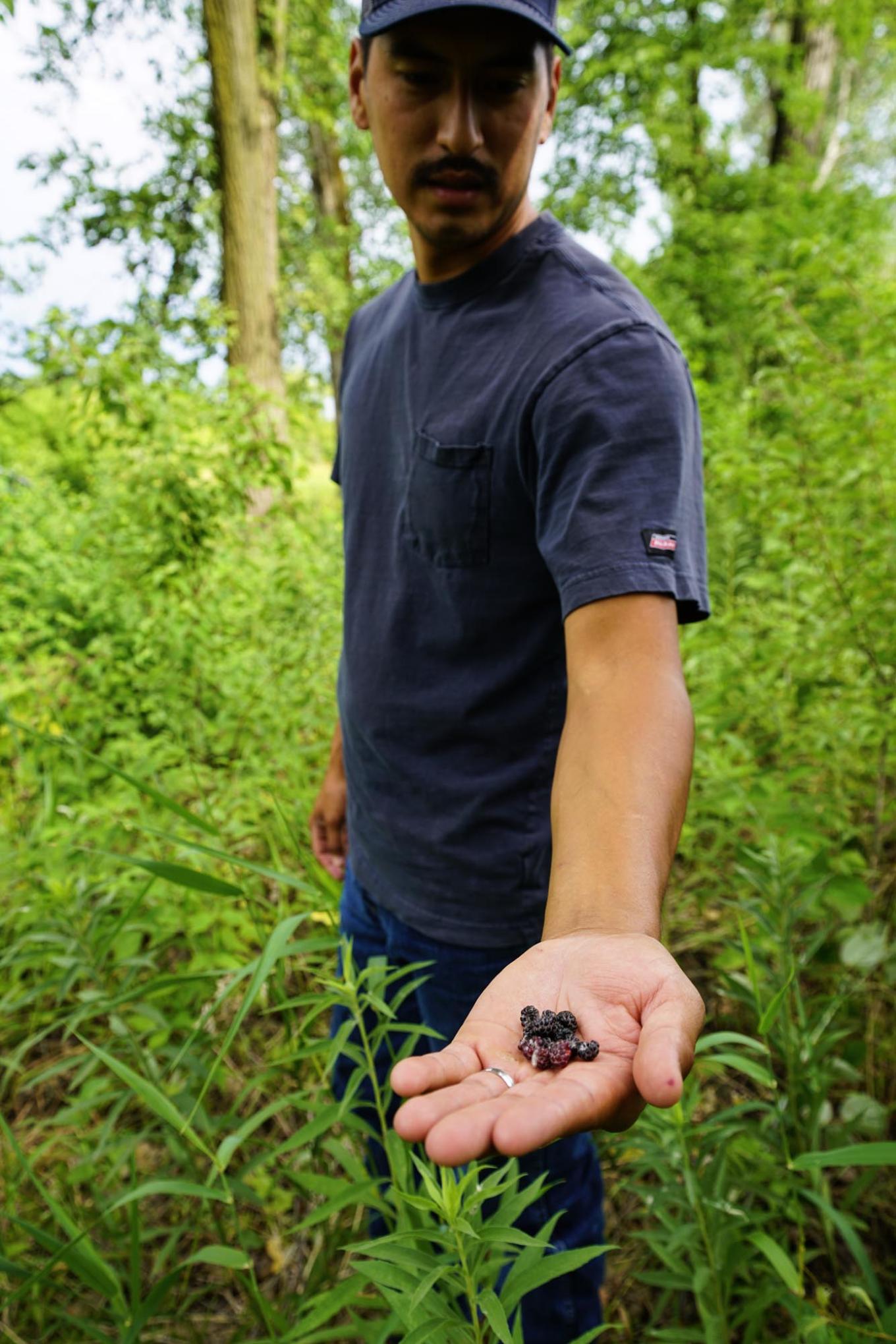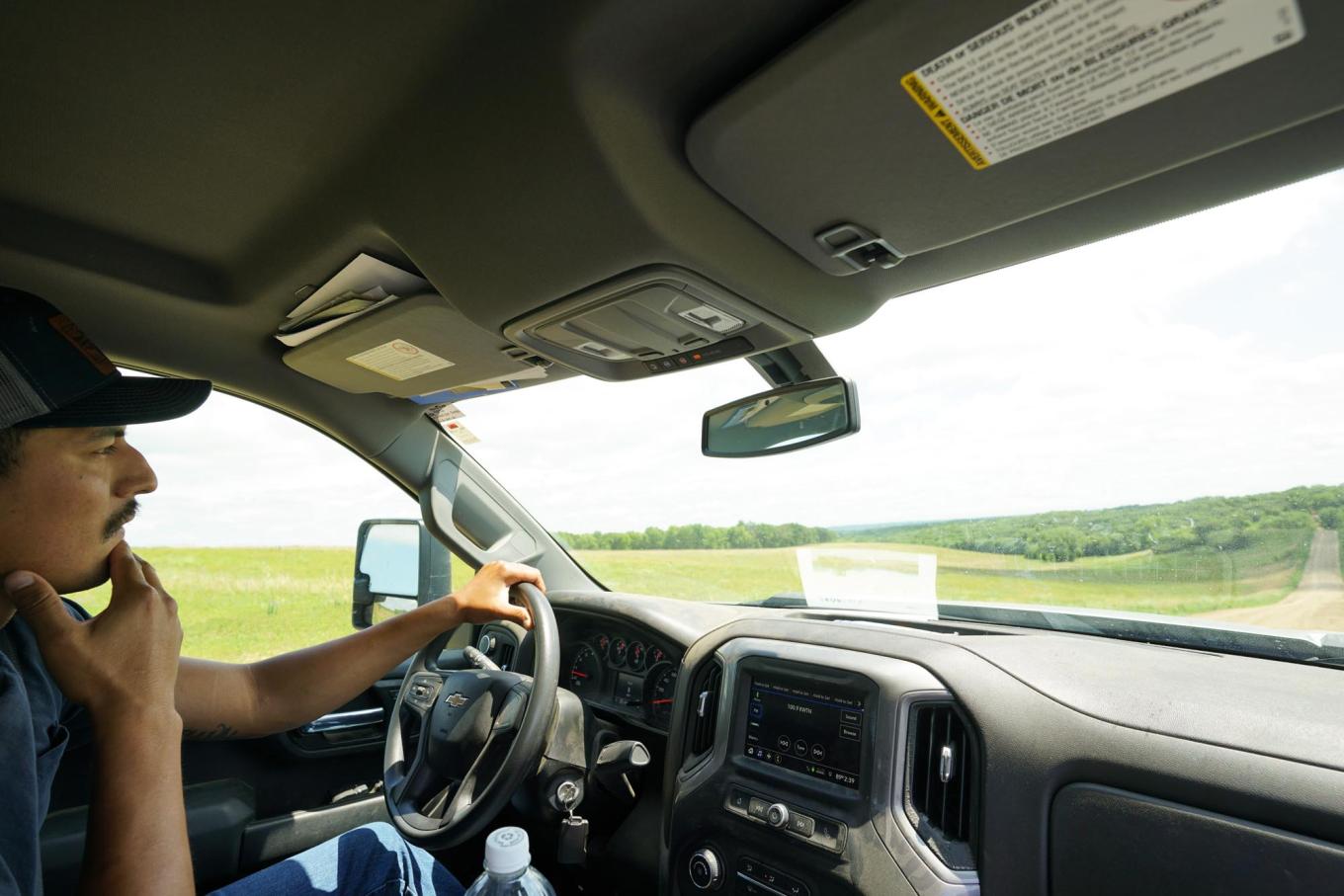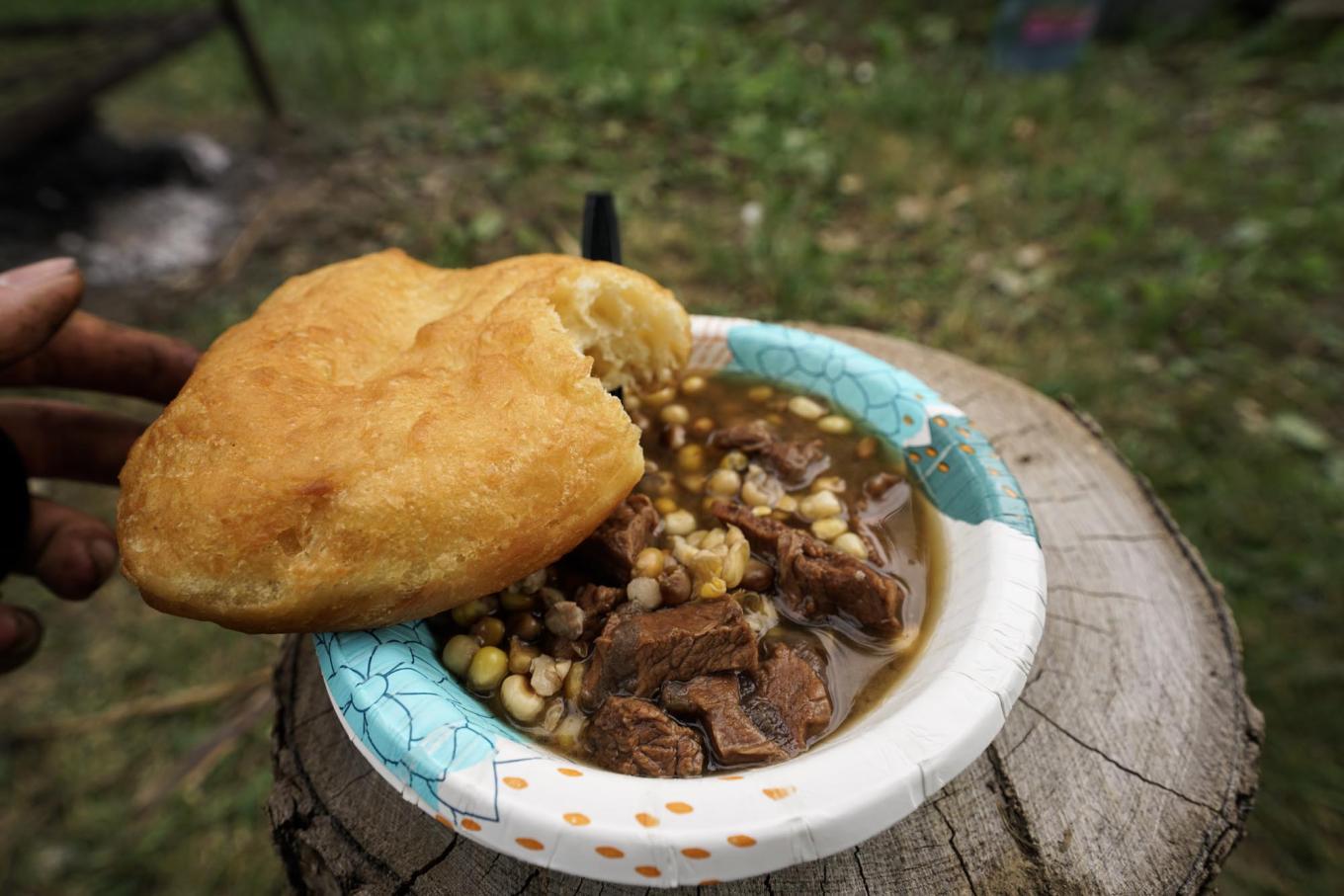
The Mad Agriculture Journal
Indigenous Food Sovereignty in Northeast Nebraska
Published on
June 19, 2023
Written by
DUSTIN BAILEY
Photos
DUSTIN BAILEY
Driving east from the foothills of the Rocky Mountains, the land is flat, dry, and bouncing with tumbleweed. The occasional herd of antelope or gas station breaks up the monotonous landscape. “Fertile” is not the way I would describe the fenced-in squares of property extending beyond this horizon in July. However, during my childhood, I can recall wandering Colorado’s eastern grassland ecosystem and being endlessly entertained by observing its diverse food web.
I remember kangaroo rats zig-zagging the trail at dawn and dusk, spotting a myriad of raptors that would keep any bird watcher’s head on a swivel, and seeing elusive animals like badgers, bobcats, and swift foxes. Prior to the subdivision of the land, the eastern grasslands were abundant with life, but only recently have conservationists broadcasted the effects of habitat fragmentation and urban development on the fragile grassland ecosystem.
Halfway through Nebraska, the landscape slowly began to change. Tones of beige began shifting to greens. The reflection of water dotted both sides of the highway. Bugs began hitting the windshield with greater frequency. Soy, corn, and wheat dominated much of the land, but pockets of untamed spaces were visible, vibrant green, and appeared to be full of life. If the dry climate of eastern Colorado could support an abundant food web, I could only imagine how diverse the ecosystem must have been in eastern Nebraska prior to the days of monoculture.
Throughout my road trip, I drove through dozens of “pass-through” towns which usually had a gas station or two and a bar nearby. On the surface, my destination appeared to be one of these towns. US-77 runs through Winnebago, Nebraska, and right off the road, you’ll find two gas stations, a casino, a Dollar General, and a coffee shop. The town is part of the greater 178 m2 Winnebago reservation, which is the current land of the Ho-Chunk Winnebago tribe (or, “The People with the Big Voice”).

I would later meet a number of Ho-Chunk members who routinely travel the country competing in Pow Wow drum and singing competitions winning thousands of dollars in prize money. This powerful music became the background tune of my road trip. Every time I started the Wrangler, I had the radio tuned to KWTN 100.9 FM: “The Big Voice.”
The Ho-Chunk people originally occupied the Red Banks of Wisconsin, which is now a vacation and recreational hotspot north of the Wolf River. The tribe’s ancestral homelands encompassed 10 million acres of pristine environment between the Mississippi and Rock Rivers, until attempts were made by colonizers to ethnically cleanse the Wisconsin and Illinois region. Despite 42 years of government attempts to relocate the tribe to Nebraska, Iowa, and Minnesota, the Ho-Chunk kept coming back to their original homelands. Finally, by taking advantage of the Homestead Act of 1862, the tribe was able to purchase land in their ancestral territory.
The current reservation in Nebraska was established by treaties with the United States government in 1865 and 1874. Members of the tribe that were displaced to the treeless plains of South Dakota made nocturnal migrations down the Missouri River to reach the Winnebago reservation of Nebraska. The Missouri River is powerful, full of freshwater fish that seem prehistoric. The river runs through the eastern side of the reservation and creates a vast hollow full of life.
I arrived there to meet with Trey Blackhawk, the manager of the Winnebago Tribal Farms. As the sun set, a relaxing, humid blanket rolled in, fireflies began flickering, and the sound of kids playing and pow wow radio filled the air.
At daybreak, Trey pulled up in his truck with a teenage boy named Levin in the back, and we began a tour of the reservation. The air was chilly and every mile or so, a flock of wild turkeys would hurry across the road. The rolling hills were unbelievably green in the humidity of July. As we were driving, Trey spoke about the history of his tribe, the goals and pursuits of his tribe, and the current action he is taking to better the lives of people on the reservation. This is where his passion about food sovereignty shone bright.
Levin, in the back of the truck, was one of Trey’s farmhands. He was a bright high school student who, after some warming up, discussed his perspective on how the national media tends to only report on negative aspects of reservation life.
Levin highlighted the fact that research will likely lead you to articles discussing increased rates of obesity, diabetes, drug-addiction, murder, and mental health disparities on reservations. However, he, along with many other people I interviewed during my stay with the community, spoke about how Trey is a leader within the tribe working to change that narrative.
Trey Blackhawk currently manages a farm with a fruit orchard, mixed vegetable operation, and animals, with the hope that the farm can be a source of healthy, nutritious food for the tribe. During the supply chain issues brought on by the COVID-19 pandemic, the reservation experienced even more complications with food than usual. Much of the community’s caloric intake was being derived from the local Dollar General or the gas station, and the necessity for independently-produced food was at an all-time high. Across the country, from Navajo farmers and chefs to the Pacific Northwest, tribes are now tapping into their traditional, land-based foodways to ditch the reliance on the industrial food system that has largely brought them hardship since colonization.
Walking around the hollow with Trey, he showed me an abundance of wild berries. One, the black raspberry, had the color of a blackberry with the perfect combination of tart sweetness, mixed with a woodsy flavor that you can’t experience from a farmed berry. Trey says his efforts towards community classes on foraging, cooking, and gardening are all done with the hopes that the tribe can create healthy lifestyle habits with the sense of pride that comes from independent food sources.
As we were driving out of the hollow, there were pockets within the thick trees of rolling, grass-filled meadows. Trey smiled when he began telling a story about a buffalo that had once escaped its enclosure and began wandering this portion of the reservation. With the abundance of grass and space, when Trey and his team finally found the runaway, it was dancing and rolling in the field. He said it was a surreal moment. The roundup crew couldn’t help but take a moment to marvel at the sight.
Trey’s current goal is to revitalize a local bison program and procure a license to process them on the reservation. Processing independence is another facet of food sovereignty. The tribe would no longer be reliant on non-native food processors, backed up with work for conventional animal agriculture herds. By processing their own bison, growing their own produce, and foraging locally, the self-determination of the tribe grows stronger, breaking any dependence on outside influence.

Tribes across the country have been fighting for self-determination and cultural sovereignty since the start of colonization. In Kotzebue, Alaska, above the Arctic Circle, the Inupiat Eskimo people have jumped through extensive bureaucratic loopholes to be able to harvest their own wildlife to serve to elderly tribal members in their nursing facility. In the Pacific Northwest, the Salish-speaking tribes have been advocating for their fishing rights for some time. Food sovereignty is one way many tribes are trying to break away from federally subsidized and industrially-processed food.
Trey has dreams of expanding his farm to increase the number of young people he can employ, increase the community class offerings to teach cooking techniques using more traditional ingredients, teach foraging and hunting techniques, and push for more language acquisition classes.
Something Trey had said earlier, in the truck, reappeared in my mind. Being involved in the local food movement in Boulder, when I hear the term, “regenerative,” there is a lot of Western science and data that comes with the mention of the practice. When Trey described “regenerative” agriculture, he brought a different perspective to the term that I hadn’t encountered with Colorado farmers. To Trey, this term is rooted in the desire to give independence back to his tribe. It is about pushing back against a norm of sourcing from gas station food, and reinstating pride in his community’s capacity to provide food for one another. Regenerative in this sense is intertwined with a social power, and the revitalization of so much more than the land.

The next day, I headed back to the farm for a day of work together. I worked alongside a group of high school students. For lunch, Trey had been cooking an incredible meal in a huge pot over the fire. He was boiling extremely colorful corn and chopped bison, while one of the farmhands brought fry bread that his mom had made the night before. Fry bread is airy and rich, like a doughnut without the sweet glaze.
When we sat down to eat, the combination of fry bread, corn and bison stew hit me in my bones, particularly after working on the farm all day. The corn wasn’t a sweet accessory to the dish. It was the dish. It was used in the same way rice is used in paella, quinoa in a vegan-friendly restaurant, or lentils in traditional Indian cuisine. It was filling and full of unique flavor that you truly cannot get from any other grain. To tie the delicious food to a story, Trey told me that some of these corn varieties are the first to be preserved as part of his seed saving project. He hopes to preserve culturally significant seeds so that others in the tribe can continue the tradition of growing nutrient-dense food with meaning.
This lunch demonstrated Trey’s passion and purpose in feeding the reservation. His mission statement could be tasted.
Trey is enrolled in Little Priest Tribal College to study agriculture, with a focus on food sovereignty, and currently sits on the college’s Agricultural Board. He is also an intern at the USDA’s Office of Tribal Relations. To support the reservation’s mission, contributions can be sent to P.O. Box 687. Winnebago, NE 68071. Winnebago Tribal Farm.
